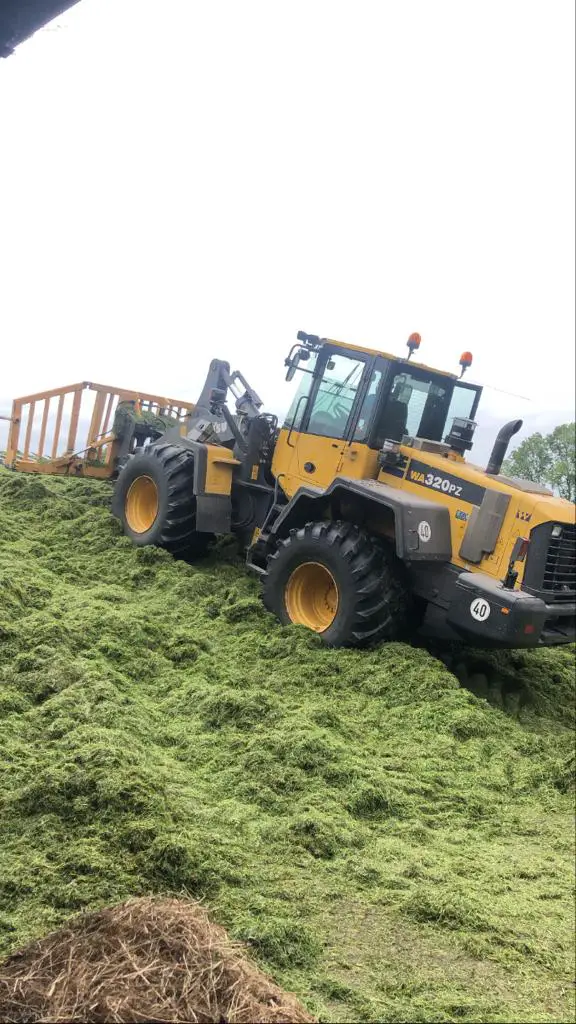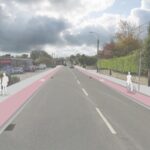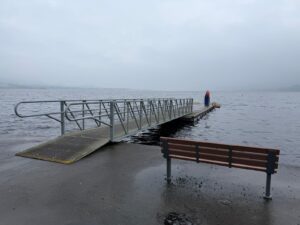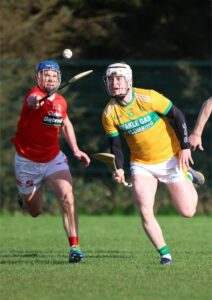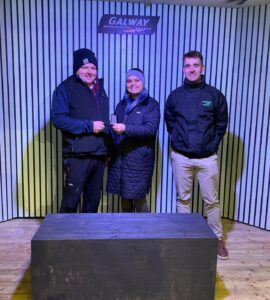There is a waltz going on in our meadows under the overcast summer sky. This waltz is choreographed to a not so subtle melody, a loud hum and rev of tractor engine and silage harvester all working in unison.
While the harvester continues its stride across the field, a new partner arrives under the chute of the harvester and together they manoeuvre the field as like a dancing couple bound together, twisting and turning in one another’s shadow at the headlands, then as that tractor and trailer departs once full, another partner takes up the dance.
While the tractors, trailers and harvester continued their waltz in the meadows, the silage pit continues to climb upward in the yard. This is where the master plying his trade is most obvious. Making a good silage pit is no different from building a solid house, the foundations have to be sound and from there it is built layer by layer this layer as well compacted as the first. I must confess that no lover of machinery am I, however I always marvel at people who work these machines at an expert level. Before long the silage is in the pit and covered for another year.
This year we went back to basics with silage making. By basics I mean we kept mechanical manipulation of the cut sward to a minimum. We cut the crop dry in 30 foot rows, it was picked up the next day and pitted. Other years we would have spread the crop with a tedder, the wilt helped garner a higher dry matter but on the other end it made it more difficult to compact as dry grass is hard to seal. The silage turned out very well but I would question how necessary wilting is if the crop is cut dry and left a few hours to wilt in its own rows. Either way we shall find out when we get this pit tested in the autumn.
Some of the silage ground will receive slurry at a rate of 2,500 gallons per acre over the next few days and we will top this up for second cut with 60 units of nitrogen in the form of protected urea. We intend to take a second cut on most of the silage ground, however some of it will be baled early in the form of light after grass. This will be our buffer feed incase of drought or inclement weather that could bring on an early winter.
The past few weeks have been hectic between breeding season, silage and our herd test which thankfully was clear. There is a palpable sense of relief to have so many milestones passed in the year already and perhaps now we can take things a little easier. It is neither healthy or productive to run a machine at full capacity all the time and the same goes for us humans. Being productive in business is very important, however in the midst of being productive it is rare that one gets a chance to be creative, this is why downtime is essential. Luckily spring calving dairy farming is seasonal so it offers us that benefit of work life balance. It is only a matter of taking it.

